One exciting part of a study abroad trip can be enjoying the local cuisine. Whether spicy South American salsas or hearty German wurst, crispy Italian pizza or succulent Spanish tapas, part of your understanding of local people comes from the food you share with them.
Modern English food is a mix of traditional recipes with international influences. Brits are very open to flavours from around the world, possibly as a result of the centuries of empire and the immigration that followed. For a long time, traditional British recipes were largely ignored at the expense of foreign imports, but a new generation of chefs led by Jamie Oliver has given traditional cuisine a new lease of life.
Read on for some English dishes you can try during a stay in the UK.
Fish and Chips
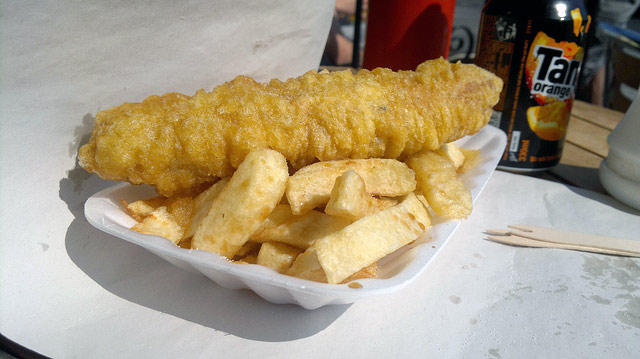
photo: James Whatley
When you think about British food, Fish and Chips may be the first thing that comes to mind. The tradition dates back to the nineteenth century, when new railways allowed fresh fish to be quickly transported from the seaside to all parts of Britain (nowhere in Britain is farther than 113km from the sea).
Various types of fish are on offer – all of them are battered, deep-fried until golden and crispy and served with thick chips. On the counter at the “chippie” (fish and chip takeaway restaurant), you will find salt and vinegar, to be put over the fish and chips. If you want to eat your food straight away, ask for it “open”, otherwise it will be wrapped up for you to take home.
Where to try fish and chips: on the beach (perhaps in Hastings, Eastbourne, Brighton or Bournemouth).
English Breakfast
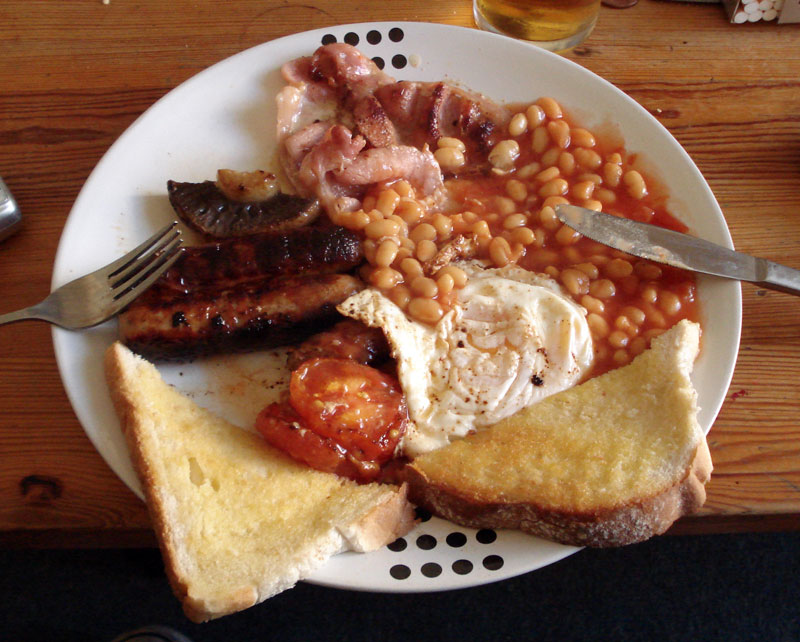
A breakfast so filling you will probably skip lunch, the English breakfast isn’t healthy, but it is delicious. Typical elements of the English breakfast include: sausages, fried or scrambled egg, bacon, fried tomato, mushrooms, baked beans, toast… or fried bread if you really need the energy. The breakfast is best enjoyed with a fresh orange juice and cup of English breakfast tea, but coffee is acceptable too!
If you want to cook your own English Breakfast, pick up the ingredients from a local butcher and cook it as slowly as possible. For a healthier option, you could try poached eggs on toast.
Where to try an English Breakfast: with a host family or in a “greasy spoon” cafe.
Sunday Roast
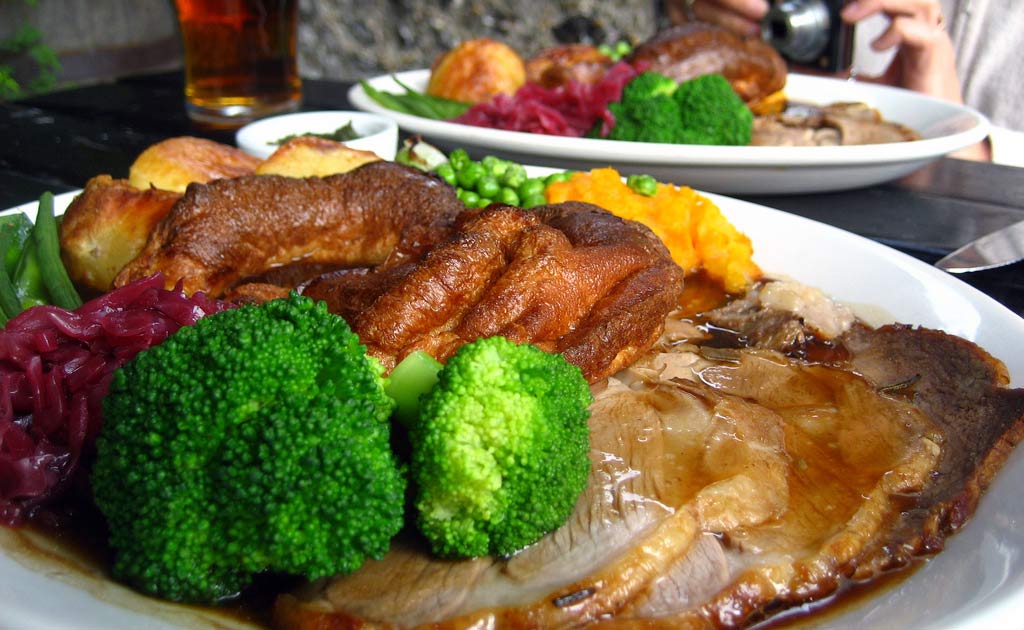
photo: Jeremy Keith
The Sunday Roast is the bedrock of English cuisine. A roasted hunk of meat – whether a shoulder of beef, leg of lamb, pork loin or whole chicken – is carved and served alongside potatoes, a wide variety of vegetables, yorkshire puddings (doughy flying saucers), gravy made from the juices of the meat, and a sauce. Don’t knock lamb and mint sauce until you have tried it!
If you go for a Sunday roast at a pub, there will also be a vegetarian option, usually a nut roast.
Where to try a Sunday Roast: with a host family or in a “gastropub”
Sandwiches for lunch
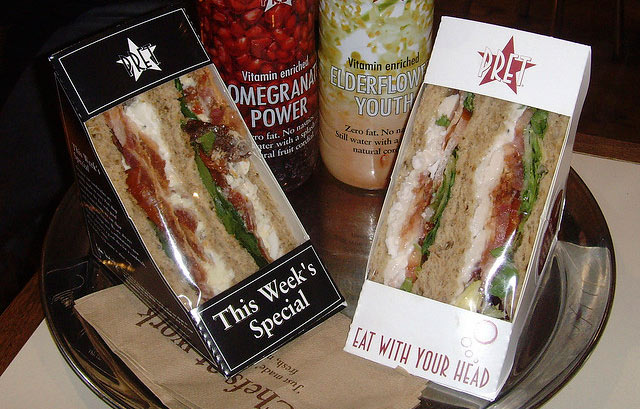
photo: Brenda Annerl
When, in 1970, a worker at the Marks & Spencer shop in Marble Arch, London wrapped up some sandwiches from the shop’s cafe and sold them in the shop, a lunchtime revolution began. Before then, workers would go home for lunch or bring a packed lunch to work.
Nowadays, they are more likely to buy a supermarket sandwich and gobble it down quickly. In the last fifteen years, the variety and standard of sandwiches on offer has increased tremendously, to include all kinds of flavours from around the world, but the traditional ones have fought back and are now the most popular again.
Where to get your sandwiches: Marks & Spencer, Pret a Manger, local cafes & sandwich shops.
Cream Tea
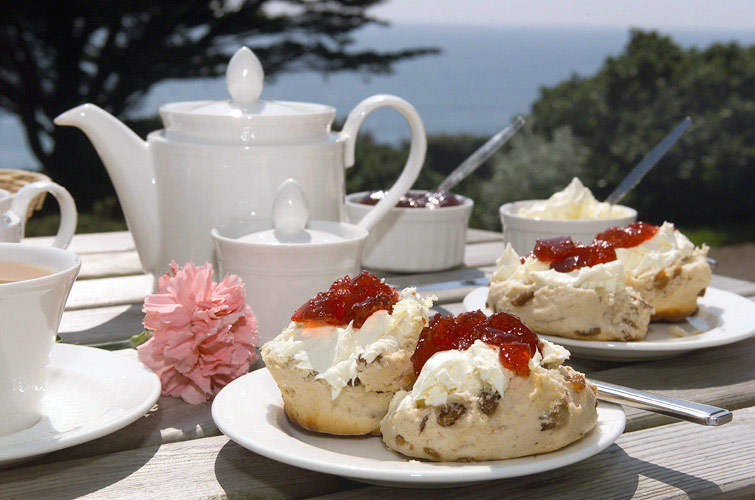
photo: Shane Global
Gossip over a nice cup of tea with a buttery scone, thick cream and jam in the afternoon; enjoy a tradition that goes back for hundreds of years, originating in the South West of England. The best place to enjoy cream tea in Britain is in a traditional cafe, or “tea room”.
Where to try cream tea: Torbay, Exeter, Bournemouth.
Crumble
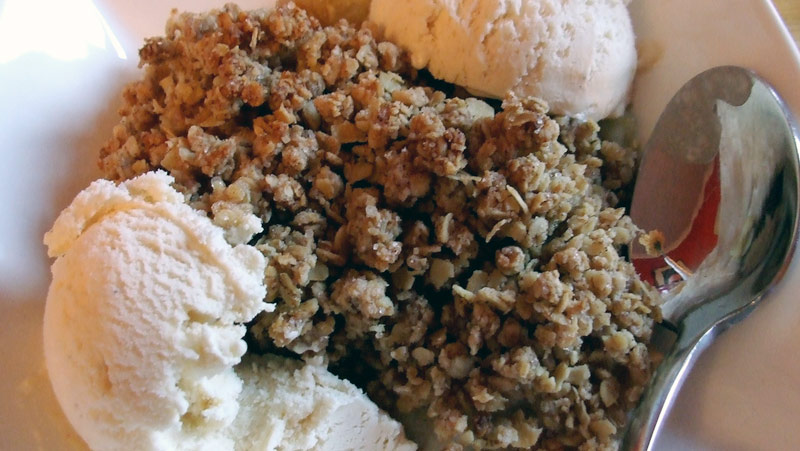
photo: Katherine
One of the most popular British puddings, a crumble consists of a layer of fruits (often apple or berries) covered with a layer of sweet crumbs and then baked. It is served with vanilla custard or, in the summer months, ice cream.
Where to try a crumble: after a Sunday Roast, if you have space.
Indian food
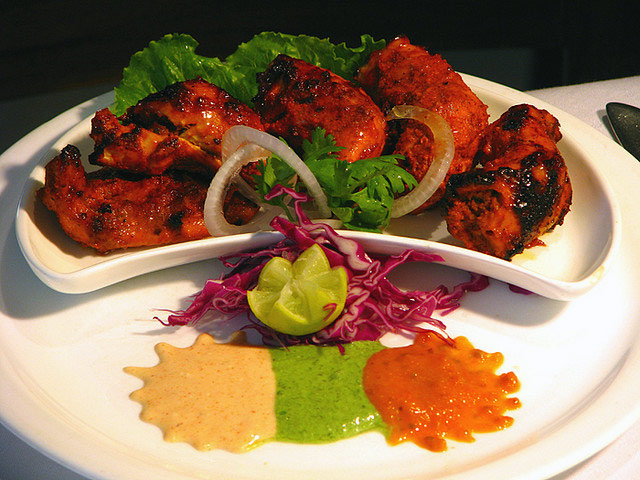
photo: Kirti Poddar
Strong spicy flavours imported from India (and Nepal, Pakistan and Bangladesh), have been given a new twist by the immigrant communities that brought them to Britain. The meal normally starts with crispy popadums and dips, followed by spicy meats, vegetables and sauces, accompanied by rice and flat nan breads. A popular politician once called the chicken tikka massala “a true British national dish”!
Although you don’t normally see them on the menu at Indian restaurants, Indian sweets such as barfi (made from condensed milk and coconut) are delicious too. Ambala is a good place to try them and they ship internationally.
Where to try a curry: all over Britain, particularly where there are large immigrant communities… or get a microwave curry from a supermarket.
Is your tummy rumbling? Contact us to find out more about our English courses in England.


